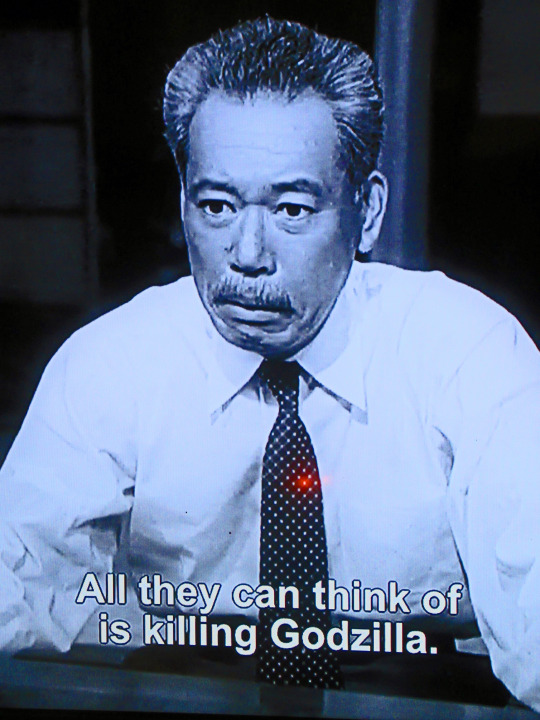#kyohei yamane
Text
Okay, I know we all have a collective crush on Dr. Daisuke Serizawa, but here's my argument for why Dr. Kyohei Yamane is an equally good blorbo:
He's a ✨paleontologist✨
He's kind of a mess
After discovering the only living trilobite specimen in the entire world, he grabs it with his hands, and goes "oooh!"
He and his daughter work on digs together
He spends the whole movie reminding people that, just FYI, this is an environmental catastrophe. The problem here is habitat loss from nuclear testing. You've conveniently forgotten about that part, because you can't shoot missiles at it. But the ecosystem is in shambles
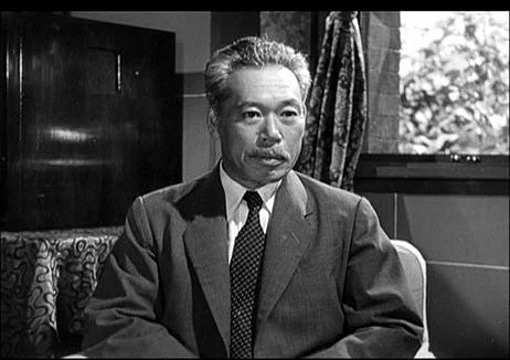
3 notes
·
View notes
Text
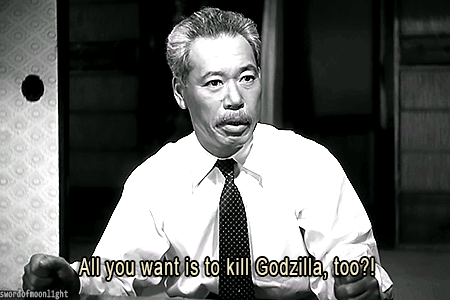


"Don't you think we should study how a creature like this survives regardless of the radiation it absorbs?"
Takashi Shimura as Dr. Kyohei Yamane in ゴジラ (GOJIRA, 1954) dir. Ishiro Honda
#gojiraedit#godzillaedit#takashi shimura#gojira 1954#ishiro honda#classic film#classicfilmedit#1950s cinema#japanese cinema#AIGHT IM BOUTTA HEAD OUT#godzilla#ough im so eager for minus one to come out on home release so i can make so manyu gifs.......#100#300
369 notes
·
View notes
Text
The First King of the Monsters (Part One)
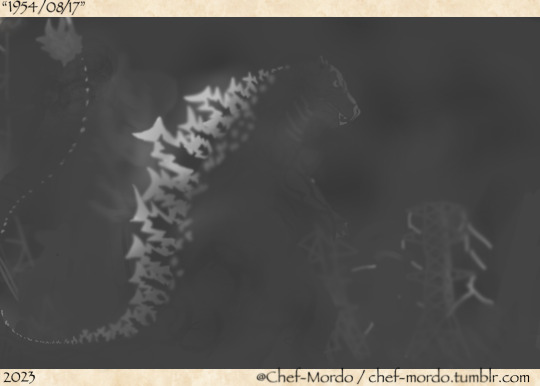
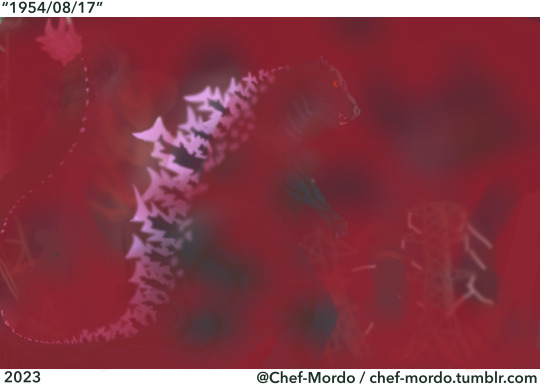
“The demolition of Tokyo”
[This Series is heavily inspired by Trollmans’ “FOLLY OF MAN” series on DeviantArt, so be sure to follow him if you enjoyed my work]
On March 1, 1954 the Castle Bravo hydrogen bomb test was conducted at Bikini Atoll. The first of many thermonuclear weapon tests, it was the largest and most powerful nuclear weapon tested by the US government at the time, a massive mushroom cloud 40 kilometers high rose above the now blazing landscape with a shockwave so large that it shook the land and sea…
Some time afterwards, a spike in radiation was picked up under ten miles off of the northern coast of Palau. When investigations were launched, the wreckage of several burned fishing vessels were found. An additional unusual trail of radiation was discovered leading North. This worried many world powers at the time as it indicated the presence of some unique, powerful source of radiation not yet known to man. The greatest fears of mankind would soon become true. Subsequently, over the following months, several ships in the Pacific Ocean were reported missing. This prompted President Dwight D. Eisenhower to send out the investigative “Monarch Task Force” research team to study the spike in radiation and missing vessels. Eventually, on the night of August 13, 1954, a distress signal from the fishing vessel Eiko Maru was received by the Japanese Coast Guard. Another ship, the Bingo Maru, was sent to investigate the wreckage and rescue any survivors. However, neither ship returned. The following evening, a raft washed ashore on Odo Island. The sole survivor from the wreckage Masaji Yamada told the locals of a bright beam of light consuming the ship. He later reported to Monarch officials that he saw a massive, reptilian shape crest the water before it dove back down into the depths of the sea.
The following morning, the Monarch research team along with JCG officials arrived on Odo island to interview locals and investigate the wreckage. As the boat neared the island, the sea seemed to turn red. Upon arrival, the island had seemed to be shut down; according to locals, an exorcism was performed on the island the previous night after a violent storm had apparently partially destroyed the island. A local elder reported that the island’s ocean deity had been angered and would come to feed off of the islanders. The island mythology states that women had been sacrificed in the past to appease “Gojira” who was stated to be the “King of the Monsters”. A gargantuan footprint was discovered irradiating nuclear energy. Massive aggressive mutated trilobites were additionally found on the shore of the island. Dubbed “Shokkirasu” after insectoid flesh-eating demons from the island’s mythology. The village alarm was later set off, followed by an ear-splitting shrieking roar. A hulking, seemingly saurian figure of titanic proportions rose from the sea on the northwestern side of the island. Japanese paleontologist, Doctor Kyohei Yamane managed to take a photo of the beast raising its ugly head over the hill before it turned to terrorize the town. While many attempted to hide on the island, a few locals managed to escape back on the ships that Monarch and the JCG had taken.
The photo would later be presented to an emergency meeting at the National Diet Building in Tokyo. Doctor Yamane would propose that this creature was awoken by nuclear testing in the South Pacific Ocean and had been the cause of sunken ships throughout the past few months. It had been decided to release this information to the public and in addition, JMSDF forces had been sent to locate and dispatch the creature, now referred to as “Godzilla”. Following this, a fleet of battleships and submarines had been sent into the red, now boiling waters of Tokyo Bay armed with hundreds of depth charges. Eventually, the monster had been located and surrounded by a massive line of explosives. As millions of litres of water shot up into the air, the beast emerged unfazed as it rose onto the shore of Tokyo’s Shinagawa ward. It tore through buildings and ended the lives of at least a thousand. Turning from the rubble, the beast then broke through the aquatic barricade, destroying massive cruisers with little effort.
The following morning another summit was called and it was decided that a line of electrical towers would be built along Tokyo’s coastline. This would send 50,000 volts of electricity into the monster, hopefully ending its life. An emergency evacuation of Tokyo was also called in case that the plan failed. Additionally, due to the previous failed efforts, the USAF had sent 5 “Boeing B-17 Flying Fortress” aircrafts filled with Mark 65 explosives to arrive the following day.
Later that night the primordial horror once again rose from the red, boiling sea. With another air-splitting roar, it crawled onto the shore and tore through the electric fence. Following a bombardment from ground units, it bent over and began to flood Tokyo with a red mist. Seemingly irritated by the constant firing of missiles towards the creature, it’s dorsal plates began to turn from a light pink to a glowing light blue. It faced up towards the sky and shrieked before activating its atomic breath and setting the coastline aflame…
I hope y’all enjoyed the first story-based entry for “GODZILLA: Age of Monsters”. Only one more post for this first chapter focusing on Godzilla’s initial demolition of Tokyo (Alongside a drawing!). Feel free to share any thoughts, questions, praise, or criticisms of my work. As always, likes, comments, and reposts are welcome! The next few posts will be posted at 10:00 AM (CDT) within the following days.
Tune in for more updates and future posts. Peace and love! ✌️🏽
#GODZILLA: Age of Monsters#godzilla#godzilla au#gojira#kaiju#kaiju redesign#godzilla redesign#artwork#art#godzilla fanart#king of the monsters#long post#story#fangoji
12 notes
·
View notes
Text

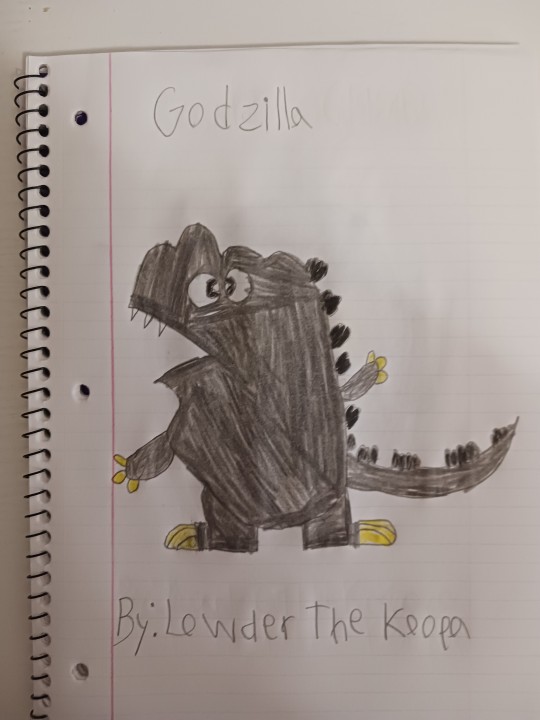
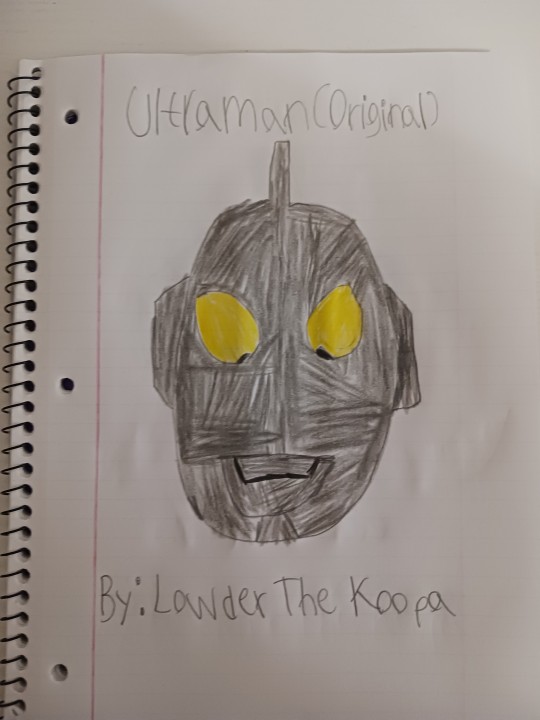

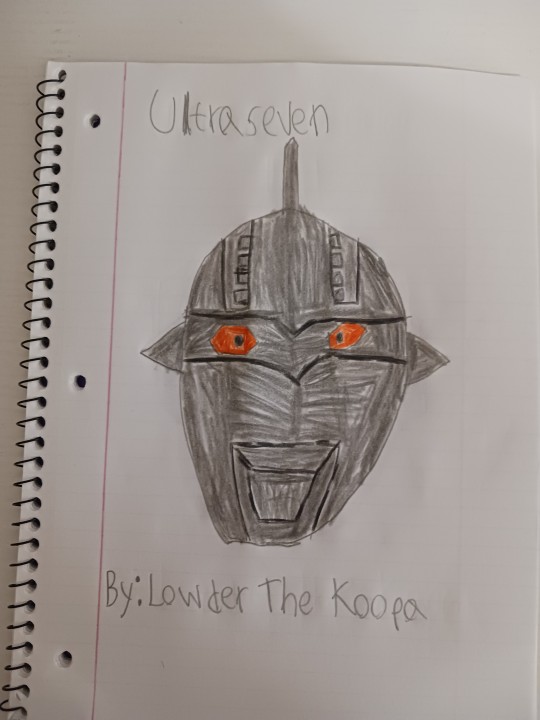
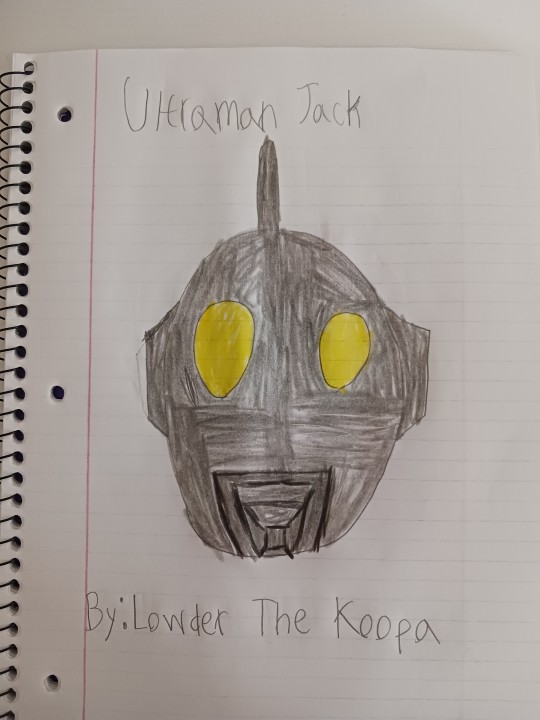
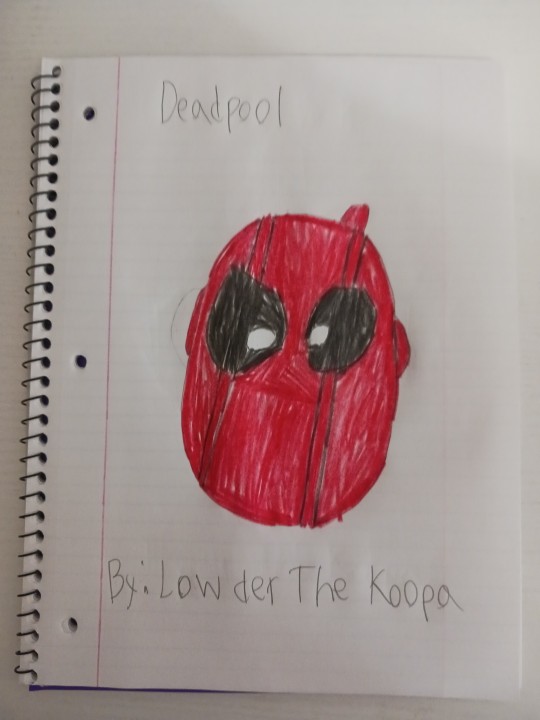
“This creature, according to the folklore of Odo Island, is called Godzilla.„ — Kyohei Yamane (Godzilla)
“And now, ladies and gentlemen, before I tell you any more, I'm going to show you the greatest thing your eyes have ever beheld. He was a king and a god in the world he knew, but now he comes to civilization merely a captive, a show to gratify your curiosity. Ladies and gentlemen, look at Kong, the Eighth Wonder of the World!„ — Carl Denham (King Kong)
"What are you, Ultraman? Are you an alien... or a human?"
"I am both. I was born to fight those who break universal laws, like you."―Alien Mefilas and Ultraman, "The Forbidden Words"
"Who are you?"
"I am Space Ranger Zoffy, from Nebula M78."―Zoffy introducing himself to Ultraman, Farewell, Ultraman
"A bright light will appear in the western sky when the first star comes out. Look for that moving light, because that will be me."―Ultraseven (as Dan Moroboshi) to Anne Yuri, The Biggest Invasion in History: Part 2
"To love humans, you must know them. You must learn their strengths and weaknesses, beauty and ugliness. Only when you know both sides can you love this planet."―Ultraman Jack as Hideki Go, Deathrem's Plot
"All that peace I felt is gone. I ruin it because I can. Because it's easy. I've fought for Preston. For the Camachos. I've fought for my friends. I've tried to make these people not just safe, but happy. I didn't go looking for these people. They walked into my life. And now the imbalance is restored. I've fought for the happiness of everyone around me. I've been willing to die for that happiness. I now realize I've never experienced happiness. I put on a good show... I simply don't know the meaning of the word... And I never will." —Deadpool
Here are drawings for the all the non-Kamen Rider/Power Rangers/Super Sentai characters along with a bonus Deadpool to see if I can draw Comic Book Characters.
#my art#ultraman#ultraman 1966#ultraman zoffy#zoffy#ultraseven#shin hayata#dan moroboshi#hideki go#return of ultraman#ultraman jack#marvel#marvel comics#deadpool#wade wilson#king kong#godzilla
7 notes
·
View notes
Text
The Victims of Atomic Testing in Gojira
Typically, giant monster movies are not thought of as cinematic masterpieces, especially in the middle of the twentieth century. This is hardly an unfounded opinion, as many of the monster movies of the time were low-budget and poorly written affairs. THEM! (1954), The Black Scorpion (1957), and The Monster That Challenged the World (1957) are all examples that I recommend watching for that exact kind of movie. Gojira (1954) is not that kind of movie.
The first in the long running and ever-expanding Godzilla franchise, it is also incredibly different when compared to the rest. Most Godzilla movies usually involve giant monsters fighting, goofy acting, and an incredibly loose plot to see those two things happen. In fact, there are many in the series that are straight comedies. There is enjoyment to be found in those, as I am a massive fan of the series, but it’s rather jarring to have watched those movies first and then going to watch the first.
It is first and foremost a tragedy, born in the minds of director Ishiro Honda and producer Tomoyuki Tanaka after the end of World War II, the primary focus of the film is how disastrous the atomic bombs dropping on Hiroshima and Nagasaki truly was. This is a somber and sorrowful film, with no happy ending. This is possibly best exemplified in the “climatic” final scene.
Before I continue, I feel I must mention the 1956 American reedit of the movie, titled Godzilla, King of the Monsters!, starring Raymond Burr. I won’t be discussing that version, but it does keep the tone of the movie surprisingly intact, so if that is the only copy on-hand, it should be enough to get the overall experience. The only major difference in the ending is added shots of Burr and an ending narration that spells out the tragedy of the movie. It’s a decent watch.
First, I’m going to give a little background to the scene in question. The key players are Dr. Daisuke Serizawa, Dr. Kyohei Yamane, Emiko Yamane, and Hideto Ogata. The city of Tokyo, Japan was just destroyed by a giant, radioactive creature called Godzilla (or Gojira, if you want to call him by his Japanese name) in an impressive display of special effects, perhaps the best at the time in the Japanese film industry. Tokyo itself looks exactly like Hiroshima and Nagasaki did after the bombs were dropped, and massive amounts of radiation are left behind. There is one memorable moment of a doctor moving a Geiger counter in front of a small child, and the massive goes crazy, signifying the child’s inevitable and painful fate.
The immediate scene before the climax is a tense confrontation between Serizawa, Emiko, and Ogata. Serizawa is a scientist who has discovered a potentially horrifying new weapon called the Oxygen Destroyer. As the name suggests, it destroys the oxygen in the surrounding area, most effective in water. That is what the device is supposed to do, at least. In practice, is simply disintegrates any living creature in water. Ogata and Serizawa have a brief scuffle over potentially using this horrific weapon. One could argue that this particular scene is the true climax of the movie, rather than the city destruction or final defeat of Godzilla.
After Serizawa reluctantly agrees to use the device on Godzilla, and making sure all of his blueprints are destroyed, the scene starts with a shot of a fleet of battleships with a triumphant score in the background, composed by the excellent Akira Ifukube. This, along with the music, should get the audience in the mood for a storm on Godzilla’s proverbial castle.
After this shot, however, an interesting choice is made. Until we see Godzilla again, there is no music heard on screen, not even diegetic music. The closest we get is the Geiger counter going off some more, showing they are above the lair of Godzilla. In fact, there are moments where, aside from the movement of the waves beneath the boat, there is no sound at all.
Follow a look at the radiation counter, Serizawa informs Ogata that he intends to plant the device himself in an old-fashioned scuba suit. He and Ogata try to argue, but Serizawa is resolute in his goal to see this through. Ogata then demands a suit of his own to assist Serizawa in planting the device.
As we cut to them getting prepared for the sea-floor walk, it is interspliced with flashes of concern on Emiko’s face in an extreme closeup, at least for the 1950s. She is looking between Serizawa, her friend since childhood that she is set to engage; and then, she sees Ogata, the man for whom she truly has feeling for. The camerawork shows this conflict within her, unsure of if she’ll ever see either of them again. Her father, Dr. Yamane, is also looking on in terror, although for him it’s for the potential loss of a great scientific study in Godzilla.
We then get our first real look at the devastating Oxygen Destroyer device. A large ball is held in the middle of a cylindrical container. As Serizawa is handed it, the camera is close on his face, showing the horror that he is about to unleash. Serizawa is played by actor Akihiko Hirata, who portrays a man tormented by his own creation, helped along nicely by the camerawork’s framing.
Ogata and Serizawa make their descent to the sea floor. During the minute long, silent trek towards Godzilla’s resting area, there is still no music, and whenever the camera cuts to a closeup of one of the two characters, it shows the fear of the task set before them.
Finally, the camera cuts to a low angle of Godzilla. His entire body doesn’t fit in the entire screen, and the camera is forced to pan up in order to get a good look at him. Instead of the loud, destructive music or a scene of him laying waste to a helpless city, the creature is simply sleeping. This sudden change in perspective on Godzilla is jarring to the audience, who had been up to this point been assuming that he was a force of evil and destruction. Rather, he is in his own way a victim of the atomic bombings. Godzilla’s own life was disrupted by these weapons of mass destruction, and he in turn attacked Japan.
The low angle is also extremely effective in showing off how big Godzilla is. While it isn’t as overt in this scene, as very little of Godzilla himself is shown in the ending, this reveal of him sleeping is perhaps the most effective use of the low angle shot in the movie.
The music of the scene must also be discussed, as after five minutes of near silence, it finally returns, but not with a bombastic “final-battle-type” score. Instead, the music is somber and quiet, reflecting the underlying tragedy of the entire scene. This isn’t a heroic moment for the protagonists, but a necessary step in order to ensure Japan isn’t wiped off the map by a fire-breathing dinosaur.
Godzilla awakens fully and starts to advance on them, and we get another low angle shot of him moving towards Ogata and Serizawa. The effect of Godzilla underwater was tackled rather ingeniously, they actually just placed the suit behind a pane of water. If they just shoved Haruo Nakajima, the man portraying Godzilla himself, into a suit and underwater, he would have drowned.
Serizawa drops the Oxygen Destroyer onto the ground, which activates it. Ogata is quickly repelled up, but notices Serizawa is not following him. The camera instead follows Ogata as he is screaming at Serizawa to follow him. The anguish on Ogata’s face is genuine, fearing for a friend. Serizawa’s face, meanwhile, is only one of resignation and acceptance. Once Ogata is back on the boat, he begs and pleads Serizawa to come up.
The camera is focusing closely on the doctor’s face, the same static shot as before, but this time he is tearfully telling Ogata that his device is working. He also calmly asks Ogata to take care of Emiko, being long aware of their true feelings for each other. The next shot is of Serizawa pulling out a knife and cutting at his rope.
Ogata demands they begin to pull him back up, but all they get back are the cut rope and air supply. Serizawa killed himself to ensure that his creation can never fall into another’s hands for evil. That this would be the one and only time such destruction would be unleashed upon the world.
Suddenly, the ocean churns, and Godzilla bursts out of the sea with a blood-curdling scream. At first it seems that the plans to attack the remaining passengers of the boat before he falls back down through the waves. His remains actually float somewhat gently to the seafloor, as he makes one final gesture, attempting to get up before his struggles cease. His flesh is eaten away by the device, leaving only the skeletal remains. Even that, too, is eventually gone, leaving only a shot of the seafloor.
Back on the boat, Ogata relays to Emiko the final message left by Serizawa, causing her to break down in tears. Dr. Yamane has a forlorn look on his face, mourning the loss of a good man and a great scientific achievement. The music throughout the scene is melancholy, showing that this victory came at a huge cost, and that there were more victims than just the people of Tokyo. The film even ends on the ruminations of Yamane, fearing that another Godzilla may rise due to the testing of nuclear weapons.
This film is almost an anthesis of the monster movies of the time. Whereas the other monster movies of the era are simply mindless beasts who kill and destroy everything in their path, Gojira gives a reason as to why Godzilla is a force of destruction. The atomic bomb was the motivator to making this movie, and more than anything else, this final scene shows just how truly destructive it was for everybody. The music and camerawork go a long way to help along this message.
#Godzilla#Gojira (1954)#Essay#This is a paper I wrote for college#I'm proud of it#I got an A#Film#Film Studies
4 notes
·
View notes
Text
Here's my casting for Godzilla 54 but with muppets
Hideto Ogata...Kermit the Frog
Emiko Yamane...Miss Piggy
Dr. Daisuke Serizawa...Beaker
Dr. Kyohei Yamane....Dr. Bunsen Honeydew
Godzilla stays the same

0 notes
Text
Godzilla Ishiro Honda 1954 Neil McInnis JPT3391
Towering over Tokyo in 1954, Ishiro Honda's Godzilla wasn't just a cinematic monster; it was a walking embodiment of Japan's post-war anxieties. Emerging from the depths of the Pacific, awakened by nuclear testing, Godzilla became a symbol of the atomic bomb's destructive power and a reflection of a nation still reeling from its devastation.
The film wasn't simply a monster movie; it was a poignant allegory. The giant reptilian creature mirrored the atomic bomb, leaving trails of fire and destruction in its wake. The characters, from the concerned scientist Dr. Kyohei Yamane to the resolute scientist Daisuke Serizawa, represented the struggle to understand and confront this new threat. Serizawa's invention, the Oxygen Destroyer, mirrored the atomic bomb itself, creating a moral dilemma: should they unleash another weapon of unthinkable power to defeat the monster it spawned?
Honda's direction masterfully wove social commentary into thrilling action sequences. The special effects, groundbreaking for their time, showcased Godzilla's immense power through miniature sets and the iconic suitmation technique. The terrified crowds fleeing amidst the collapsing buildings evoked the memories of Hiroshima and Nagasaki, a raw reminder of the bomb's impact.
But Godzilla wasn't just a symbol of destruction. It also embodied the fear of nature's unpredictable wrath. Awakened by human intervention, Godzilla became a force of retribution, a reminder of the delicate balance between humanity and the natural world. Beyond the allegory, Honda crafted a compelling human drama. Dr. Yamane, haunted by the consequences of nuclear research, becomes Godzilla's reluctant antagonist. Serizawa, burdened by the power of his invention, grapples with its ethical implications. These characters, facing personal struggles against the monstrous backdrop, resonated with the audience still coping with their own postwar realities.
The film's ending, ambiguous and haunting, reflected the lack of easy answers. Godzilla is seemingly vanquished, but the threat of his return lingers. The Oxygen Destroyer, the potential savior, is also a potential harbinger of further destruction. This unresolved tension mirrored the complexities of rebuilding a nation shattered by war and grappling with the consequences of scientific advancement. Godzilla's impact transcended Japan. It resonated with audiences worldwide, becoming a cultural icon and launching a long-lasting franchise. But the original 1954 film remains a unique masterpiece, a powerful blend of monster movie thrills and social commentary. It served as a cathartic experience for a nation healing, a reminder of the past while offering a glimpse into an uncertain future.
Even today, over 60 years later, the themes of Ishiro Honda's Godzilla remain relevant. The dangers of nuclear weapons, the ethical dilemmas of scientific progress, and the delicate balance between humanity and nature – these issues continue to challenge us. By revisiting this cinematic giant, we are reminded of the enduring power of cinema to reflect our anxieties and inspire us to confront them.
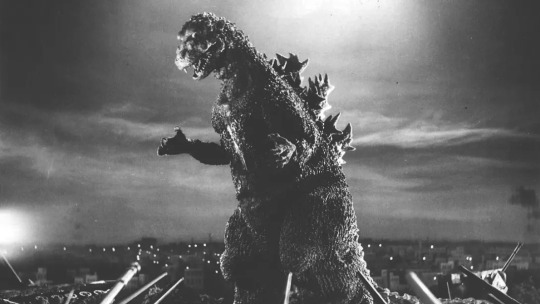
0 notes
Text

The first Kaiju profile for this project, and how fitting that it's for the King himself.
Name: Godzilla
Other names: Xan'Lanth (translated from Laputian and Nacaal scripts), Gojira (by the natives of Odo Island), King of the Monsters, God of Destruction, Butcher of Tokyo
Threat Level: High
Size: 100 meters tall, 250 meters long (counting the tail)
Weight: 50,000 metric tons
First sighting: November 1st, 1954 (Odo Island), November 2nd, 1954 (Shinigawa), November 3rd, 1954 (Tokyo inland)
Info:
If humanity had an apex predator, Godzilla would fit that category.
Supposedly the last of an ancient superspecies that evolved within the Hollow Earth and dominated the planet up until the Permian Extinction Event, Godzilla was awakened into the modern day following H-Bomb testings in the South Pacific. During that time, Godzilla had established a territory off the coast of Odo Island where he would sink any ship drifting into his domain. After the sinking of two Japanese ships, the Eiko-Maru and Bingo-Maru as well as an inland attack made by Godzilla, Dr. Kyohei Yamane along with his daughter Emiko and Odo Island native, Shinkichi Morita, investigated the island and came face-to-face with the gargantuan beast.
Godzilla would then be beset upon by depth charges following an order by the newly established JSDF to quietly kill him after refusing to release information on the first Kaiju to encounter modern humanity. The act only served to enrage the beast as he followed back the JSDF ships to Tokyo Bay. The following night, Godzilla rampaged across Shinigawa, destroying a lighthouse and a train before returning to the sea.
However, this was only just a taste of the horror that would come. For on November 3rd, Godzilla made his way into the Tokyo Mainland, shrugging off every weapon thrown at him and turning the heart of Tokyo into a sea of fire before finally returning to the bay. As a result, thousands lay dead and millions more were wounded. The event would forever live in infamy as "G-Day".
In the advent of this tragedy, Dr. Daisuke Serizawa set off to kill the beast using a weapon he had been building in secret, the Oxygen Destroyer. At first it seemed to have worked, though at the cost of the good doctor's life. At least, so it seemed, until the following year when Godzilla, heavily scarred by the Oxygen Destroyer, reappeared on Iwato Island with another Kaiju, Anguirus. After a fierce battle between the two monsters, both titans fell into the sea and reappeared in Osaka where they continued their bout.
After a fierce battle which set the city ablaze, Godzilla and Anguirus clashed a third time in Yakimo Island and were buried in ice and snow. But, just like the first time, Godzilla managed to come back again, and again, and again. It is now a thousand years after Godzilla's war with humanity began, and now there seems to be no end in sight in the most devastating conflict humankind has ever faced.
Abilities:
Nuclear Discharge: Godzilla can release radioactive energies in a series of concentrated blasts. These can range from a blue beam of plasma dubbed "the Atomic Breath" which can level entire city blocks and stun and severely harm other Kaiju, a far more powerful red variant called the "Burning G Spark Spiral Ray", the "Nuclear Pulse" which is a shorter range attack in which Godzilla can release his gathered energy for his oral attacks from pores in his skin, the "Nuclear Meteor Shower" in which he gathers all the energy needed for his Atomic Breath into a small fireball which explodes into a shower of plasma sparks which can cover a vast distance, the "Cherenkov's Fist" in which he transfers his atomic energies into his claws with the explosive force of a small nuclear detonation, and the "Plasma Cutter" in which he launches gathered nuclear energies from pores in his tail which he swings out, destroying anything within a 20 mile radius.
RG-1 Cells: Godzilla's genetic structure contains a type of unique cell known as Regenerator G-1 or G-Cells which enable him rapid healing. They also contain mutagenic properties. These can be bypassed as what happened in 1954 due to the presence of Oxygen Destroyer-related scar tissue on his body.
Amphibious Nature: Godzilla is able to survive both on land and underwater. Like all Kaiju, Godzilla's skeletal structure is incredibly strong, even more so than titanium or tungsten which allows him to support his colossal weight with his body collapsing. He is able to survive depths that would be deemed too crushing for most organisms not fit for deep-sea living conditions.
Pseudo Omniscience: Godzilla can sense the energies of the world around him.
Radiation absorption/metabolism: While Godzilla is capable of eating normally, he can also absorb sources of radiation. Too much radiation is expelled through pores in his body, which can result in contamination, though this was only recorded in 1954 and 1955 as Godzilla only emits a somewhat safer level nowadays.
0 notes
Photo

Poster for the long-forgotten 1956 film Dr. Yamane Goes to a Baseball Game.
22 notes
·
View notes
Photo

Is Godzilla a paleozoic dinosaur?
#kaiju#daikaiju#Godzilla ゴジラ Gojira 1954#Dr. Kyohei Yamane#Takashi Shimura#japanese cinema#japanese monsters#giant monsters
49 notes
·
View notes
Photo
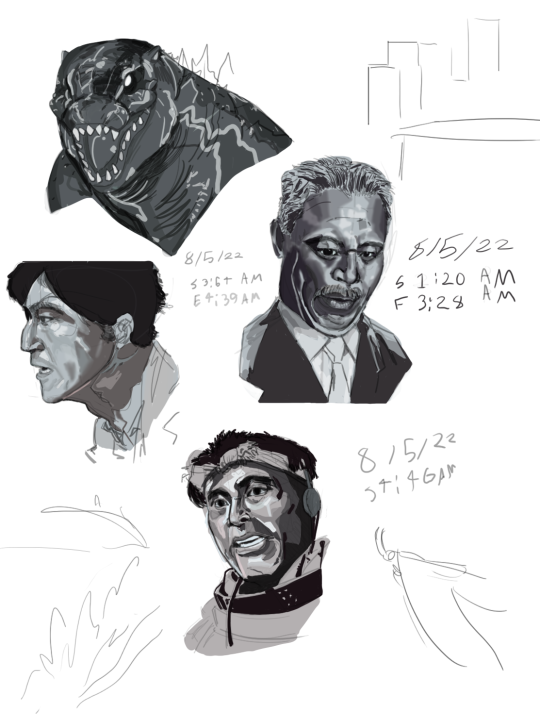
Godzilla studies
#godzilla#godzilla 1954#godzilla (1954)#kyohei yamane#daisuke serizawa#Hideto Ogata#I was going to draw Emiko#but#you can see the date I started this I kinda wanna be done with these#my art
36 notes
·
View notes
Text
2020 J.League Best XI
2020 J.League Best XI
A record number of Kawsaki Frontale players made J1 Team of the Year for the 2020 season. (more…)

View On WordPress
#akihiro ienaga#ao tanaka#everaldo#hidemasa morita#J1#jesiel#jung sung ryong#kaoru mitoma#kyohei noborizato#michael olunga#miki yamane#shogo taniguchi
0 notes
Text
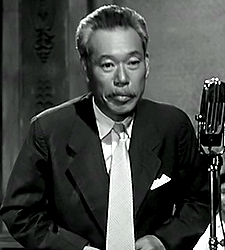

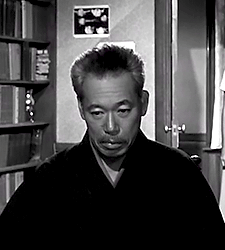



Takashi Shimura as Dr. Kyohei Yamane in ゴジラ (GOJIRA, 1954) dir. Ishiro Honda
#takashi shimura#ishiro honda#gojira#gojiraedit#godzillaedit#godzilla 1954#classicfilmedit#classic movie#classic film#japanese film#japanese cinema#50s sci fi#50s movies
22 notes
·
View notes
Text
Godzilla (1954)

So I watched Godzilla directed by Ishirō Honda. Gotta love the giant atomic city wrecking monsters. I also like that the eyepatch-wearing scientist Daisuke Serizawa (Akihiko Hirata) is not a bad guy of the movie. That was what I was expecting when I first saw the movie. I guess in lot of older western popular culture that I’ve been exposed to, disabilities and deformities have commonly been attributed to the villains. And of course we have the stereotypical image of a pirate. I have no idea if the intention of the director was to play on the stereotype, or if it was cool to have a scientist wear an eyepatch.

Takashi Shimura from The Seven Samurai is also in this movie, playing the weirdly likable stubborn biologist Kyohei Yamane who doesn’t like the idea of destroying Godzilla.
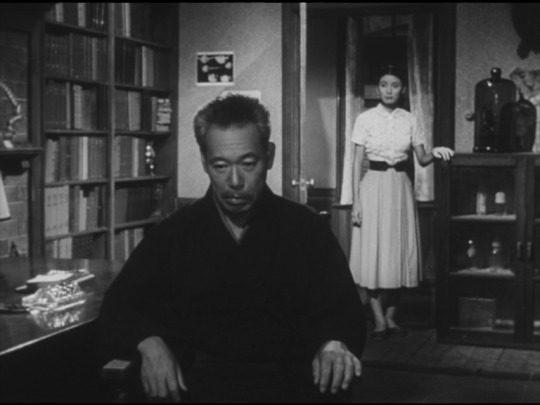
Godzilla is a solid monster movie that is a lot more somber in tone than some of it’s contemporaries. Just like Them! of the same year, the movie’s monster is created by nuclear bombs. But while Them! touches on the subject, the movie is more entertainment, while Godzilla is more of a metaphor of the dangers of the nuclear weapons. And it’s no wonder after the bombings Japan went through during WWII. Still, it is a bit weird how after the first movie Godzilla evolved into sort of a hero character in some of the subsequent movies.

16 notes
·
View notes
